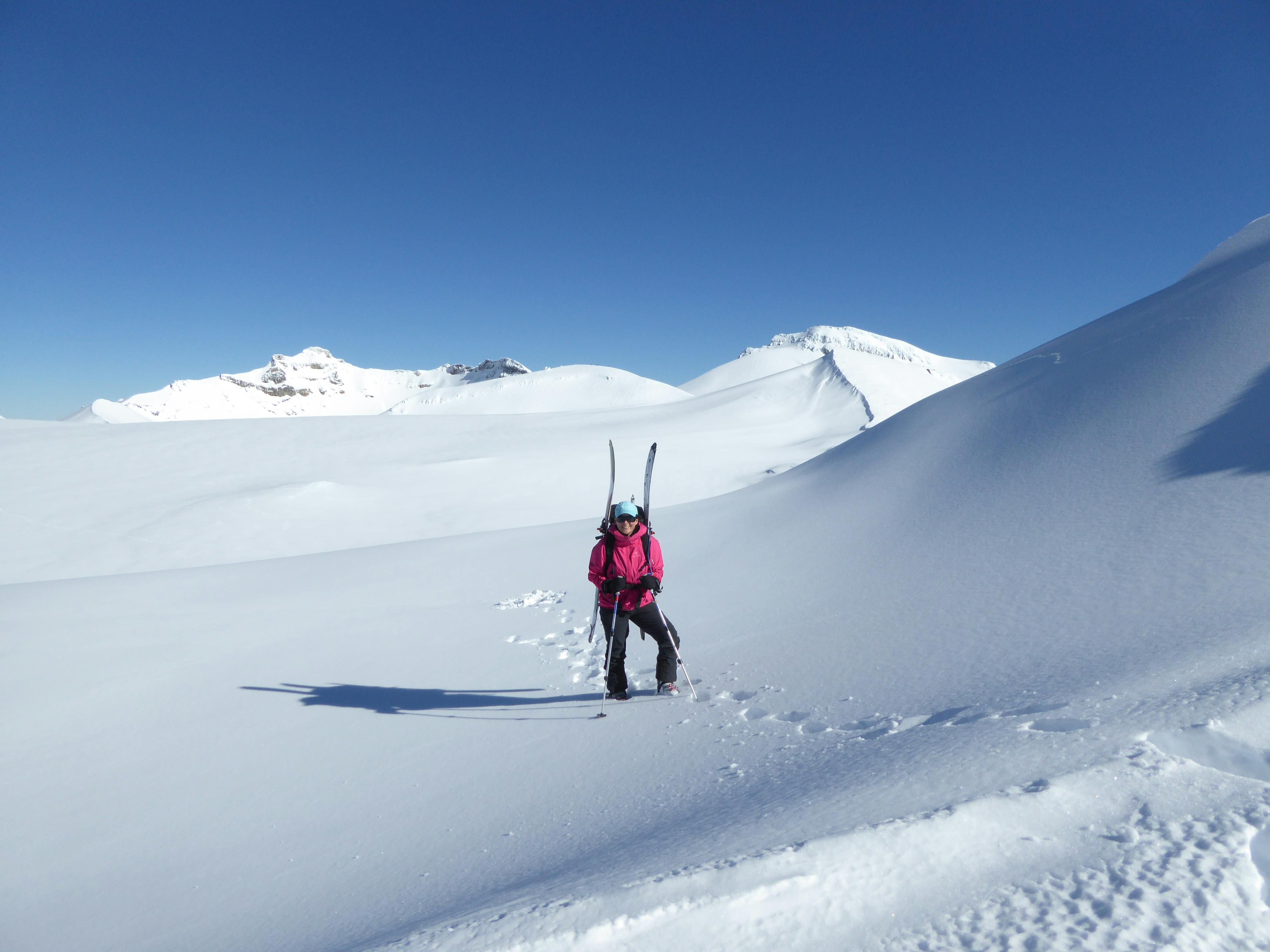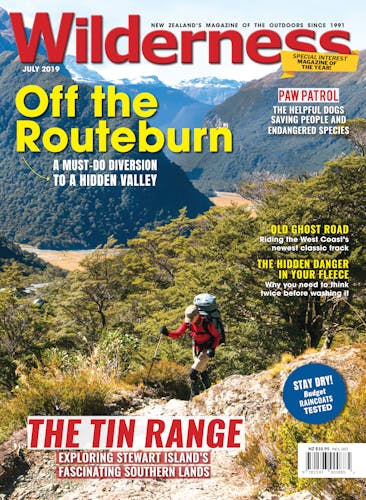The tramping action doesn’t have to stop when winter hits, especially if you’re a ski bunny. A bit of gear adaptation and some snow training will see you right into ski touring terrain.
Looking out the window of the ski club lodge on Mt Ruapehu’s Whakapapa side, I eyed up a route I’d been ‘finger tramping’ on the topo map for a potential ski tour. Although the snow level at this altitude wasn’t much to write home about, up top it was blanketed in white – a veritable winter wonderland. It would be icy, for sure, but that’s what crampons and an ice axe are for – and what’s a North Island winter adventure without a little ice, after all?
As I was dreamily gazing at my beloved mountain, fellow ski clubbie and keen ski tourer Ken asked to join me. Ken is one of those enthusiastic, super-fit blokes and I knew he’d be a good candidate for a big day out. (Ken’s also got a reputation for innovation and inventiveness. There’s a club story involving him being duct taped into a plastic bag, wearing a wetsuit with cling film around his booties, lying on top of an inflatable tube and floating around in the lodge water tank while tethered to someone outside for safety, in the name of energy conservation. I’m hazy on the details, but it sounds epic.)
Starting from the top of the Far West T-Bar, we skinned upwards, Ken faster than me but also bravely putting himself in the guinea pig position for discovering patches of ice. Even with skins, your skis slide out on ice and it’s a terrifying feeling. I hadn’t yet bought ski crampons, so at various stages I had to remove my skis and hike up steeper sections with my skis on my pack.
After an hour or so, we reached the Notch – a small dip in the crater rim that allows access to the summit plateau. The ice was crusty and thick; Ruapehu is subject to ‘rime’ ice, caused by wet, freezing winds coming in from the ocean and the fact that it’s a mountain sticking up in the middle of nowhere. Ken didn’t have crampons or an ice axe, so he stayed low and traversed north while I went to climb Tukino Peak.
There’s nothing quite like being on top of Ruapehu – any part of it – on a brilliant winter’s day. There wasn’t so much as a breath of wind; everything was still and quiet. I could hear my heart pounding and my lungs puffing as I made my way up the icy ridgeline, stopping every few minutes to admire the view.
I summited Tukino and cramponed down to the saddle between it and Te Heuheu where I met up with Ken again. While he rested, I dashed up Te Heuheu (it would be rude not to) and was surprised by a group of climbers who appeared over the lip, having done a technical climb from Tukino Ski Field.
Then it was time for our moment of glory: skiing the valley between the peaks and to the west of Pinnacle Ridge. Whakapapa skiers and perusers of topo maps will know there’s a lovely gully that runs from the saddle to the top of the Valley T-Bar, where it opens out into wide, snowy fields of amazingness.
But it wasn’t to be. That day we were cursed with a breakable crust, which wasn’t pleasant to ski. Ken made a valiant go of it and managed to get down in some sort of style, but I eventually had to take my skis off and walk down. Oh, the humanity. (I returned a few weeks later and managed to actually ski it, but I’m not going to pretend I did it well.)
We finished the day with a sunset walk down the mountain, which would wait for another day.
So you think you can ski tour?
If you’re a keen tramper with a passion for skiing, ski touring is a natural progression. And it’s certainly not difficult, particularly if you already have snow craft skills and have used an ice axe and crampons before (must-have tools for touring on Ruapehu).
You’ll need touring skis, boots and bindings; the skis are lighter, the boots have a more relaxed ‘walk’ mode, and the bindings release from the skis in tour mode so you can skin uphill. You can either go for a regular alpine ski boot with a touring binding or opt for ‘tech’ bindings. For these, you’ll also need a boot with a Dynafit toepiece (two small indents on either side of the toe, where the binding connects). Make sure you have the right boot for the binding you choose.
Skins go on the skis when in uphill mode and come off for the downhill fun. Ski crampons are also a good idea for North Island conditions.
Remember to include avalanche rescue gear – shovel, probe and beacon – and know how to use them. An avalanche awareness course is in your best interest.








